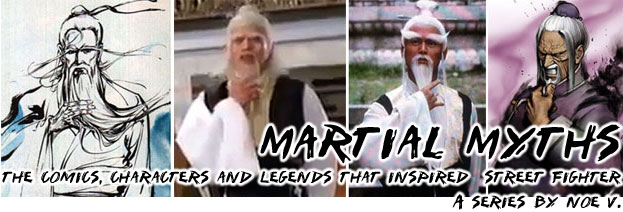
In the wuxia tradition there was always a price to be paid for using killing techniques in a battle. A person that attempted to use a powerful strike for evil purposes would receive a consequence. The most powerful techniques required a pure mind and heart, if a person struck with malicious intentions then it was unnatural, it caused damage to the internal organs and chi meridians. Chi was generated after all from nature and the elements, anything that manipulated chi outside of natural purposes had consequences. Those that continued down the dark paths of chi manipulation often did so at the cost of their soul.
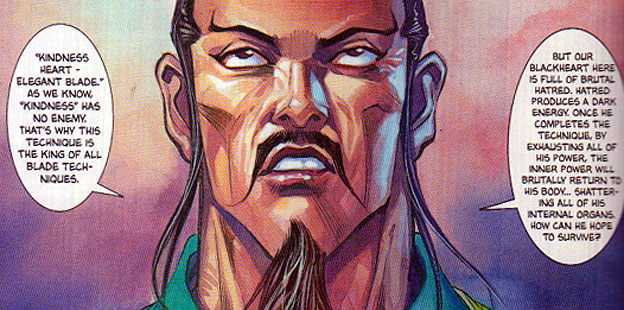
In the fighting stories there were always practitioners of the dark fighting arts. These were fighting styles meant to poison, cripple and kill opponents. In the case of Gouki he was studying a pure version of the assassin's fist and was using the strikes exactly as they were meant to be used. This took him off the path of a martial artist and turned him into a murderer. In many stories these techniques were cursed. Only the most villainous clans would have ever taught these techniques. To use them meant to turn away not only from society but from humanity as well.
The early practitioners of the dark arts in wuxia legends were said to have been masters of the poison styles of kung fu. The early fighting forms of Shaolin focused on “animal styles.” These were punches and strikes that tried to mimic the most dangerous predators in the animal kingdom. The tiger and eagle were just some of the styles that the monks helped to develop and preserve through the centuries. It made sense that man would try to study and emulate the creatures that depended on fighting for survival. It was not enough for the villains in stories however. They studied the poisonous animals including the scorpion, centipede and toad to develop their own killing techniques.
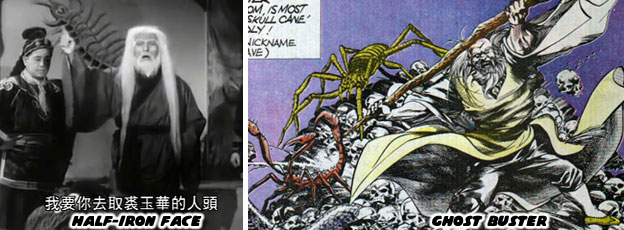
These evil masters were often major players in film and manhua. The evil master in the classic film the Furious Buddha's Palm was named Half-Iron Face. The icon on his banner was the centipede and he used its poison to kill opponents. When he wanted to torture them instead, like the heroine in the movie, he would implant a centipede into them and made it bite their heart whenever he played a drum. Talk about being an evil bastard! Of course it was completely over-the-top but entertained audiences that loved mixing superstition in with their action. This archetype was explored in various manhua like the poison master by the name of Ghost Buster in the Iron Marshal comic. He had developed ways of distributing poison through the air, weapons or in touches. In one instance he had poison dust hidden in the feathers of a bird, as it flew it poisoned the air around it. It was intercepted by the Iron Marshal before it had reached the emperor.
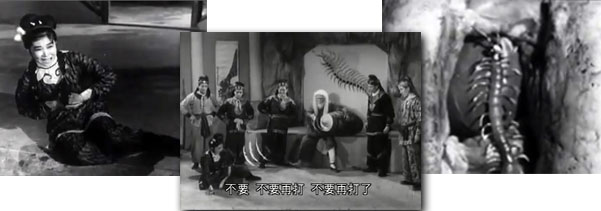
Poisons and poison techniques could be used to torture and brainwash opponents. The toxins that did not kill character would sometimes disfigure them in the wuxia legends. Many of these techniques had an antidote known only to the masters. A hero would have to defeat these people in order to learn the secret. In other instances if a hero were powerful enough he could use his chi to burn away the poison. The Iron Marshal for example used his chi to evaporate the poison dust carried by the bird without harming the bird itself. He then let the bird fly back as a warning to its master.
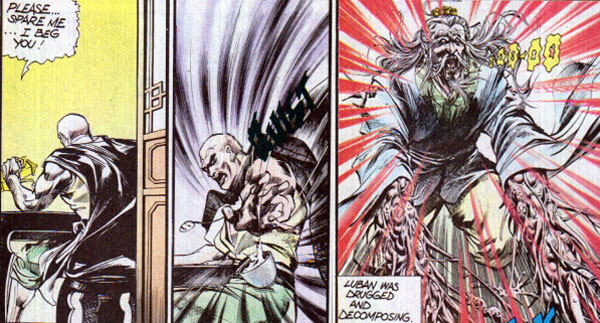
Chi could be used to control the natural elements, including air, water, fire and lightning. The most powerful characters tapped into this to deliver their fa jin attacks. The evil characters could send out poison attacks these ways. A hero could counter that attack and send it back provided they were strong enough.

The Iron Marshal had a showdown with one particular villain that had tried to poison an entire court. Iron used his chi to gather the poison out of the air and delivered it back to the villain. This was an example of an evil or poisoned fireball attack. The villain had once started out as a good character, a court advisor that had turned against his emperor and subjects. A lust for power had turned a few characters in the series into villains. When they did that, when they were willing to kill countless innocent lives, they started becoming ugly or disfigured. The poison arts and evil fighting techniques corrupted even formerly noble men.
The Iron Marshal had a second major story arc that turned the mentor of both Iron and Duke into a villain. Tienway Champ had been secretly studying stolen martial arts and the dark arts as well. These philosophies and practices actually allowed him to return from the grave after he was assassinated by the Bloody Duke.
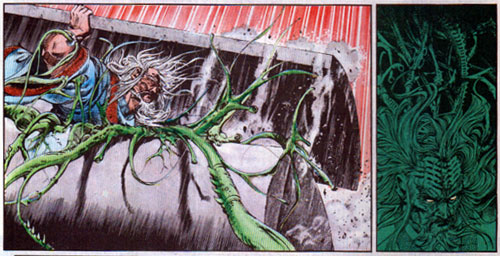
Tienway did not return from the dead to get revenge on the Bloody Duke, instead he returned so that he could get his hands on the Unicorn Sword and unlock the mysteries of the Unicorn Cryptic. These were a series of techniques that could have made him the most powerful martial artist in the world. This quest for absolute power was a mad obsession. The wuxia parable was showing how evil could corrupt the once great Tienway Champ.
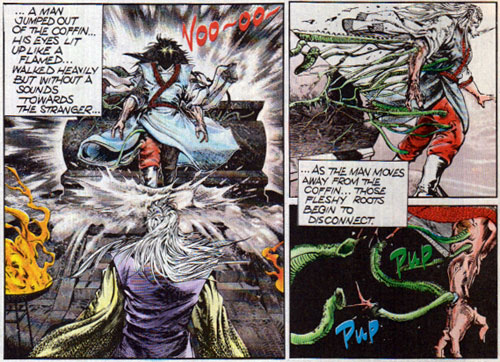
The techniques that Tienway had mastered had turned him into a monster. His lust for power and worship of the dark arts had caused him to be rejected by both heaven and hell, his body would not rest at peace and this explained his resurrection. Tienway had become a master of the "God Forbidden" techniques. A visage of the Buddha was shown with tears in his eyes. Demonstrating the pity and compassion felt for a person lost to the darkness. The figure of the Buddha as the all-powerful force returned again and again in the wuxia tradition. The Buddha represented righteousness. The martial arts techniques associated with the deity were said to destroy evil. The Buddha's Palm film and manhua titles were examples of the religious associations that the martial arts had, particularly when it came to expressing qigong and the battles between good and evil.
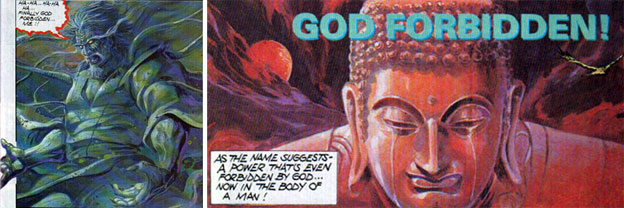
Characters that succumbed to the dark arts were very powerful in the stories, easily rivaling the most gifted masters. They were incredibly strong, fearless and seemed to not feel any pain. The trade off for all this power is the corruption of the physical form. Villains became grotesque creatures in these stories. They looked fearsome and animalistic. Gouki for example was designed with the features of a lion, a large head of spiky hair, a flat nose and sharp teeth to make him intimidating to players. In canon Ryu attempted to defeat Gouki with a well placed hadoken to the chest. What he discovered instead, and what was revealed to audiences, was how little of Gouki remained human at all. The Dark Hadou, the evil chi, had consumed Gouki and there was nothing left of the man on the inside. He became a physical manifestation of rage, a literal shell of skin over a core of evil energy.
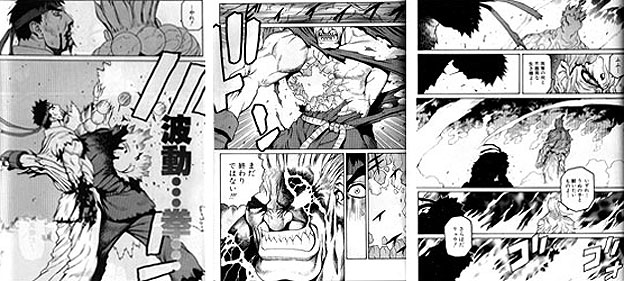
There was a duality to chi, same as the Force in the Star Wars mythos. The good and the bad, the light and the dark, were constantly seeking balance. No force was greater or lesser but both forces were constantly fighting. The dark chi sought to corrupt people who lusted for power while the good chi was meant to heal and grant power to those who are not ambitious. The forces of good must be ever vigilant to protect themselves and the community from the influence of evil. What this did was place the martial arts heroes in the role of the equalizer. Through the stories and adventures the hero discovered that every battle required an outcome and that even mercy had its limits. When it came to absolute evil there could not be a compromise. The hero was placed in a position where he had to use all of his techniques, including the lethal ones, to defeat the forces of evil. This did not turn the hero into a killer, but rather a force for justice. The person was trying to restore balance to nature.
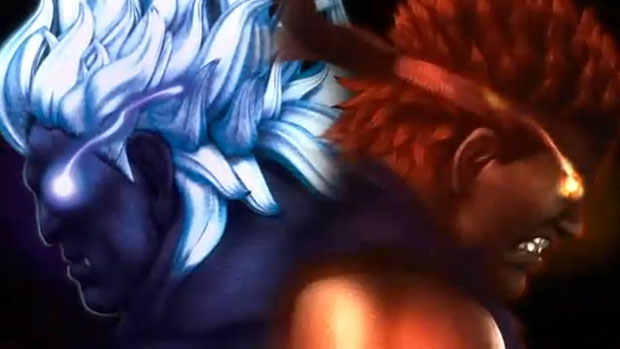
Near the end of the Iron Marshal story the origin of the Great Thor was revealed. Thor was a great martial arts master that had developed the Thunder techniques. Those techniques were stolen by by an assassin named Raving Eagle who was working for Tienway Champ. This assassin raped the wife of Thor and kidnapped his only son. When Thor returned from training and discovered what had happened he became filled with rage. Unable to deal with what had happened Thor accidentally killed his wife and went mad with revenge. Another martial arts master by the name of Immovable Creep offered to give Thor a reprieve from his torment because Thor had no way of knowing the identity of the assassin. Thor agreed and took the non-emotional formula which gave him amnesia for 30 years. During this period he trained the Iron Marshal and revealed onto him the techniques he had meant to show his son.
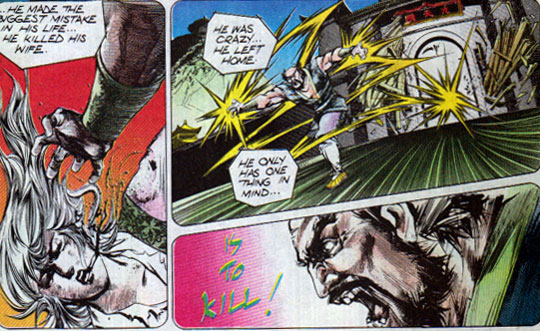
Western mythology had featured similar tragedies to the story of the Great Thor. The Greek hero Hercules was also a mighty warrior that let his pride and temper get the best of him. He ended up killing his own family in a fit of blind rage. To atone for his crime he was sent by the gods to perform a series of labors. A similar plot was explored in the God of War series as well. After Kratos killed his wife and daughter he was sent out on a series of missions by Athena to forgive his crimes.
The Great Thor had vowed never to teach anyone these secretive techniques after what happened to his family but fate intervened. The story showed the penitence of the Great Thor as he tried to help those on the side of good without quite knowing why he was doing it. When the memory of Thor was restored he vowed to atone for his sins and restore his family name. The opportunity presented itself later in the series. Thor went into battle with a clear mind. He knew that evil must be destroyed and did not hesitate when it came to performing his most lethal technique. The power of the Thunderbolt at close range destroyed Raving Eagle. The use of this technique was completely warranted unlike the Metsu Shoryuken that Ryu used on Sagat.

The heroic tradition dictated that a good character, no matter how lost, had a chance at redemption but the most evil and corrupt did not. Ryu learned from his over-reliance of lethal techniques and vowed to stay away from the dark had. He became a better fighter because of it. All characters in the classical tradition evolved. The young heroes particularly grew into maturation over the course of a story. The ways in which this evolution happened was almost universal between the manhua and manga editions.
The hero was hopelessly unprepared to fight the main villain early on in the stories. They had to develop his or her skills considerably. In wuxia stories the hero could often be aided by more than one master, especially after they have learned all of the techniques from the current mentor.
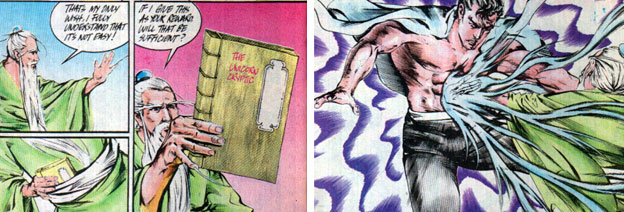
The Iron Marshal was actually aided by a martial arts genius and former emperor disguised as a peasant. This was after Iron was trained by Thor. The elderly man gave Iron a book with the secrets to the Unicorn Cryptic. This was the technique that Tienway had returned to steal. The techniques contained within the book could take over a century to master, even for somebody as gifted as Iron. What the emperor did was speed up the process by transferring his power and knowledge as chi into Iron. Doing this caused the emperor to age terribly but he was satisfied knowing that the powers were in the hands of a lawful person and capable warrior. With this newfound power the Iron Marshal could put an end to the strife caused by his former master.
Characters were often depicted as growing and maturing in manhua through physical changes to the character. The easiest way for an artist to do this was by changing the color of the practitioner's hair. This visual cue had been explored in western literature as well. In the biblical story of Moses the voice of God guided him. At each of these encounters his hair became progressively lighter until it went completely white. This physical change showed that something profound has happened to the character. In the bible story it was tremendous wisdom being passed down onto a leader. Those with white hair in the wuxia stories were also sage masters, yet capable fighters whose physical appearance beguiled their ability. Some characters grew exponentially in their levels of power through the stories and seem to age instantly. Such was the case for the former Emperor and the Great Thor.
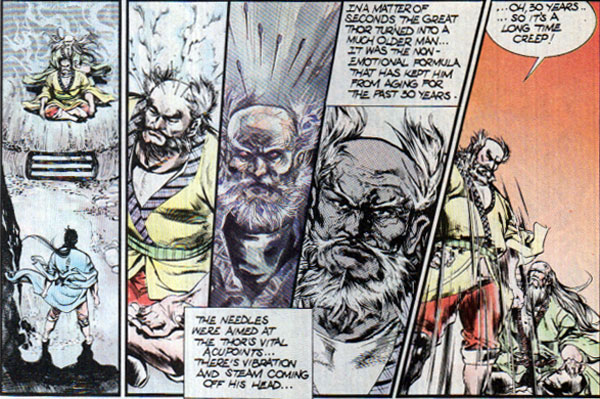
When the Iron Marshal first met the Great Thor he had dark hair and was enjoying his days living in seclusion. Thor was an incredibly powerful martial artist that did not look to be over 40. Yet in one issue Thor aged tremendously. In doing so also became a more powerful master. What caused this transformation was the lifting of the curse of amnesia he had placed on him. When this formula was undone by the Immovable Creep then Thor aged rapidly and his hair went stark white.
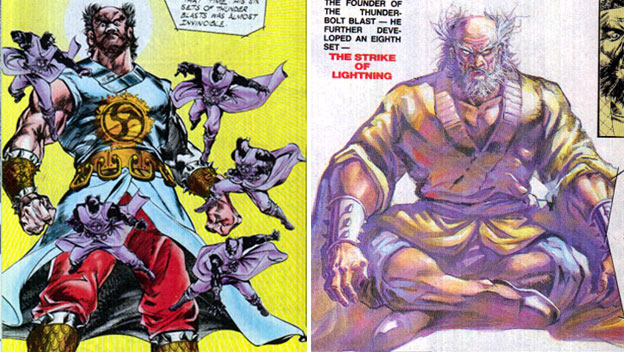
The usual visualizations of chi were placed on the character in the story. The Immovable Creep opened up all of the meridians on Thor using acupuncture needles, this release of chi was presented as steam. Remember that chi meant steam or breath in qigong. The release of energy and changing of hair color was also explored in manga and animé titles. None had made this more apparent than the Dragon Ball series. When the main character, Son Goku, went beyond his mortal power he became a "Super Sayan." At this point his hair went from jet black to golden yellow and energy flowed from him in crackling waves. This tradition of having an ultimate version of a person had begun in Eastern religions. Blogger Art-Eater created an extensive look at the relationships between the character design in Asura's Wrath and Buddhism. These observations also applied to the physical presentations of power, tenacity and wisdom in manhua and game design.
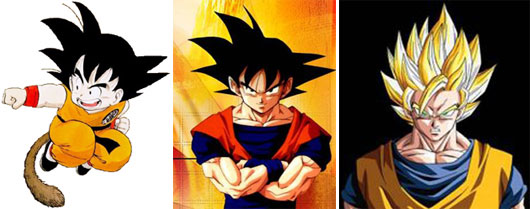
In Street Fighter Gouki was a master as well, yet he too had an ultimate or "true" version of his persona known as Shin Gouki. At this point Gouki's hair went from red to white. Any humanity that the character had was eliminated and he became nothing short of a living demon ready to destroy his opponents. Every fight for that version was a fight to the death. The "regular" version of Gouki knew when a fighter was no match for him and warned them to stay away. Shin Gouki would more likely kill a fighter that wandered too close than say anything. In the game he had more diverse and powerful attacks than Gouki. In order to challenge him in game the player had to meet certain criteria, like not losing any rounds and defeating multiple opponents with super attacks, thus proving that the player was also a fighting master. The Shin Gouki character was more aggressive and relentless than Gouki and only very good Street Fighter players could claim to have a winning record against him.
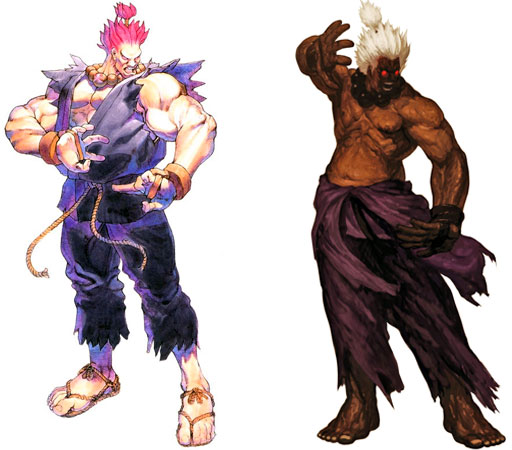
Super Street Fighter II was the first game to introduce a wuxia-type boss villain into canon. In the original game Ryu defeated Sagat. This was a variation of the Mas Oyama battle with Reiba. Sagat was not an evil person and had nothing to do with the death of Ryu's master. The boss character simply followed manga conventions by being large and powerful. In the sequel Ryu fought Vega (M. Bison in the USA) who was even more like a manga character. Vega was presented as a militaristic dictator, similar to a Hokuto no Ken-type villain. Gouki was actually meant to be the boss for SF III. The martial arts basis of the character, dark chi powers and revenge plot was pulled from wuxia storytelling. This combination of elements made him a very popular character. Instead of letting the developers introduce him in a proper SF III title he was placed into Super SF II as a hidden character. This inclusion and list of criteria to unlock him was inspired by the "Sheng Long" April Fool's joke.
Gouki was a formidable character that set the standard for all fighting game bosses. He had the perfect balance of move designs that made him believable and well rounded rather than cheap. The decision to give him animalistic features only added to his presence. The powers of the Dark Hadou were based in Buddhism but physically he was also inspired by the Nio, the fearsome guardians of Heaven and Hell in Eastern mythology. Gouki and even Mr. Karate from SNK's Art of Fighting / King of Fighters series were symbolically powerful characters rooted in spiritual beliefs. Those brave or foolish enough to fight these characters were willing to risk crossing over into the afterlife, or simply put, enter a fight to the death. Similarly Tienway Champ had returned from the dead more powerful than ever in the Iron Marshal story ready to take more souls on his quest for power.
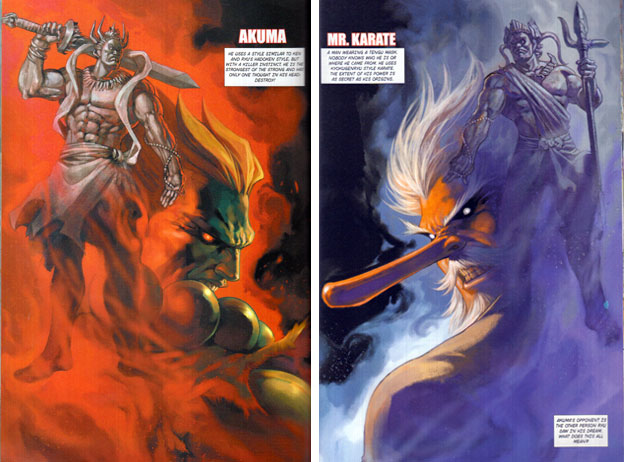
The hero in the wuxia tradition had to be able to rise up to the challenge, even the supernatural ones, and develop powers greater than the villains or die trying. At some point in the story the main character had to become aware of the powers they possessed and energy they could draw upon. The force of chi that flowed through the masters was almost limitless. If they could consciously tap into that energy then they had a chance against even the most powerful villains. In the qigong understanding almost everything in nature had chi. The wind for example was the chi of the Earth. Fire radiated heat as a form of chi and even water generated chi, but none of the elements had consciousness or perceptivity. Animals had perceptivity and chi but not “yi” a concept of right and wrong. Humans had all three and could learn to master them through the study of qigong. In martial arts fiction the hero was able to tap into this unseen energy and stage a spectacular comeback against even the most hardened opponent.
Qigong combined with the lessons handed down by the martial arts masters gave rise to the superhuman legends. The practitioners of Shaolin Quan, mentioned in the first blog of this series, demonstrated these amazing abilities by breaking stone with their bare hands and repelling spear tips with their throats. They had a fierce religious belief system and were known for defending villages during times of strife. The Shaolin fighting style was said to have really been created around 609 AD by a monk who used a broom to fight off invaders. At first the bandits thought he was crazy and laughed at him but when he proved that he was a capable fighter they ran away. His mastery of the staff was so impressive that other monks requested he teach them as well. It was said that he was a reincarnation of Kinna, the Fighting Buddha. Thus the Shaolin style was sometimes referred to as the Kinna Quan. These newly formed warrior monks with their devout origins were the template for the Jedi in the Star Wars films. They were also the biggest influences in latter wuxia comics and movies. The spiritual connection allowed the masters to fight even the most powerful forces of evil with their bare hands. These battles between good and evil were always the most spectacular in the manhua stories.
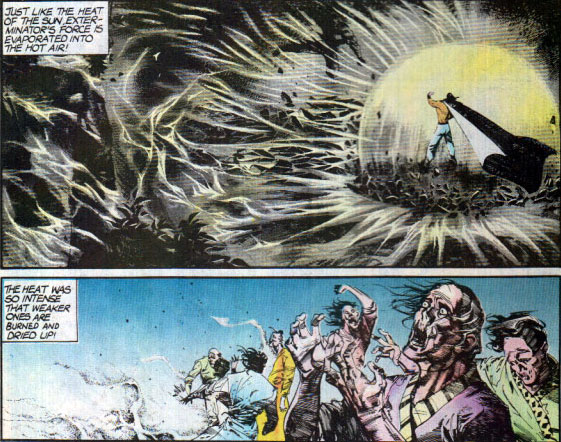
When the masters of good and dark chi battled they often caused collateral damage. They did not even have to physically touch a person in order to harm them. Only those that were strong in body and mind could divert the energy that these battles expelled. Regular people with no martial arts training would explode or burn up from the release of chi. Giant waves of chi were drawn in the manhua titles, flowing back and forth from hero to villain, upsetting nature and harming those in the way. Dark chi, or evil hadou could draw out the essence of living creatures and destroy it, this was visualized in the Ryu: Final manga as vegetation burned off by an unseen force.
These battles were always awe-inspiring in the comics and perfect for a fighting game. Street Fighter presented these chi battles as super moves, allowing gamers to play vicariously as the ultimate masters of the secret arts.
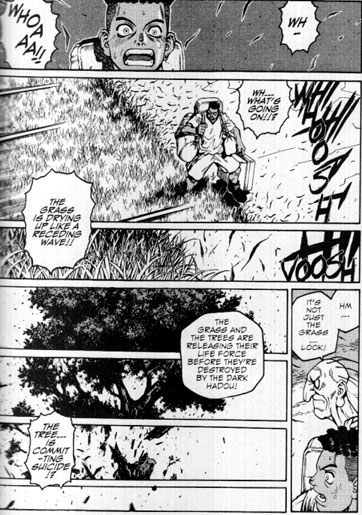
During the climactic battles between good and evil the hero often came to a realization. The techniques that they had learned during their travels were not enough to defeat the final opponent. It was at this point that the hero unleashed a new self-taught technique. This move often combined lessons from the previous masters as well as the latent chi energy that the hero could tap into. They did this in the heat of battle but with a calm and collected resolve.
The final lesson of the wuxia narrative demonstrated was that the hero was most powerful when they were in control of their emotions. Their yin and yang chi, the earthly and heavenly energies could best be harnessed by an enlightened mind. The Iron Marshal for example developed a powerful chi blast called the "Wipe Out" which was a combination of the Thunderbolt techniques of the Great Thor and the power of Unicorn Cryptic. He did this in a calm and collected state while his opponent was furiously trying to kill him.
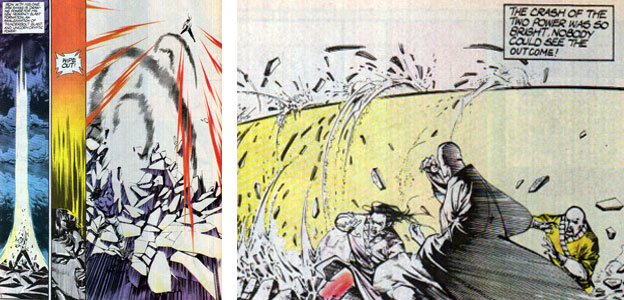
Ryu had done something similar in both the SF Zero and Ryu: Final manga. Before facing the final opponents he did not let his emotions get in the way and let the dark hadou take over, instead he fought Vega and later Gouki bringing all his abilities to the match with a calm resolve. The move invented for the character was the "Fist of the Wind". It was a direct punch that had the focus of a shoryuken with the lateral range of a hadoken. This strike allowed Ryu's punch to meet the opponent head on and transfer his power into a single point, destroying any chance for a counter. This move was placed into SF IV as a counter attack rather than a super move. Ryu was able to find the power required to defeat the boss characters by using all of his external and internal techniques. Ryu, as any great wuxia legend, was forged by the experience of facing different opponents and taking on new masters.
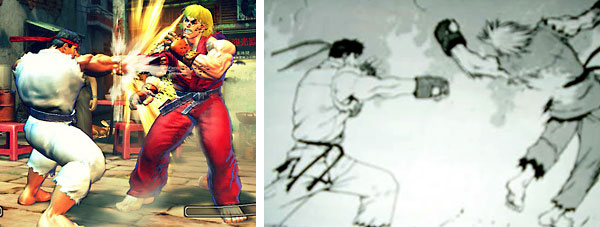
The heroes in martial arts fables were similar to the heroes in other genres. They were flawed characters but personable. They often rose from tragedy to become something extraordinary. They demonstrated the ways in which people should learn from their mistakes, especially during the most difficult parts of their lives. When called to sacrifice they do so without hesitation.
Players became fans of Ryu for the same reasons that audiences identified with Joe Yabuki in the manga Ashita no Joe some 20 years earlier. Joe was flawed and sometimes unsure of himself. He did not win all the fights but he never stopped striving and working hard to be the best. Through his dedication he was able to hold his own against formidable odds including the world champ. By extension Ryu and the Street Fighter cast also carried over the best qualities of earlier manga and manhua heroes. They had powers and abilities that were awe inspiring but placed on personable characters. The diversity of the cast; black, white, Asian, Hispanic and European reflected the audiences that were playing the game. This cast more so than any other cast in the history of fighting games had a deeper connection to the classical martial arts heroes and villains. It tapped into the subconscious associations that players had with fighting and heroic archetypes.
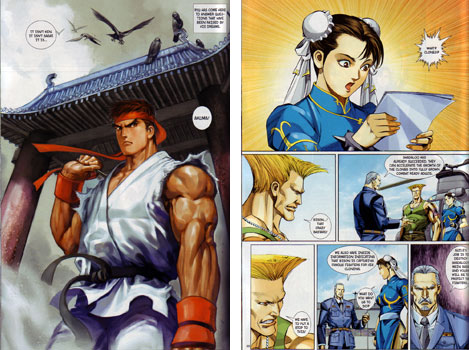

No comments:
Post a Comment